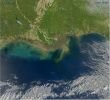These following facts about Mt. Etna should expand your knowledge about this mountain. Mount Etna, as you know, is an active strato-volcano on the east coast of Sicily, Italy, close to Messina and Catania. It lies above the convergent plate margin between the African Plate and the Eurasian Plate. It is the tallest active volcano on the European continent, currently 3,329 m (10,922 ft) high, though this varies with summit eruptions. It is the highest mountain in Italy south of the Alps. Have you ever visited this mountain? If you haven’t, then these facts about Mt. Etna will show you what it has.
Facts about Mt. Etna 1: Etymology
According to Adrian Room’s book “Place-names of the World”, the name “Etna” was originated from the Phoenician word “Attuna”, meaning “furnace” or “chimney”. He dismisses the theory that Etna is from the Greek “aitho”, meaning “I burn” – through an itacist pronunciation.
Facts about Mt. Etna 2: Eruptions
Eruptions of Etna follow a variety of patterns. Most occur at the summit, where there are currently (as of 2008) five distinct craters—the Northeast Crater, the Voragine, the Bocca Nuova, and the Southeast Crater Complex (2). Other eruptions occur on the flanks, which have more than 300 vents ranging in size from small holes in the ground to large craters hundreds of meters across.
Facts about Mt. Etna 3: Facilities
Etna is one of Sicily’s main tourist attractions, with thousands of visitors every year. The most common route is through the road leading to Sapienza Refuge, lying at the south of the crater at elevation of 1910 m. It hosts a large parking, several bars, a hotel, and is a starting point for the cable car
Facts about Mt. Etna 4: Smoke Rings
In the 1970s Etna erupted smoke rings, one of the first captured events of this type, which are extremely rare. This happened again in 2000. Video footage of the 8 June 2000 event was captured by a naturalist filmmaker Geoff Mackley. Another event occurred on 11 April 2013.
Facts about Mt. Etna 5: Recent Eruptions
Large lava flow from an eruption in 1928 led to the first (and only) destruction of a population centre since the 1669 eruption. The eruption started high on Etna’s northeast flank on November 2. Then new eruptive fissures opened at ever lower elevation down the flank of the volcano. The third and most vigorous of these fissures opened late on 4 November at an unusually low elevation, approximately 1,200 m (3,937 ft) above sea-level, in a zone known as Ripe della Naca.
Facts about Mt. Etna 6: Features
Mount Etna has three prominent summit craters in addition to flank vents on its slopes that emit lava, ash and gases. Lava flows down all sides of the mountain and extends to the sea on the southeast flank.
Facts about Mt. Etna 7: Effects
Twenty-five percent of Sicily’s population lives on the slopes of Mount Etna. The mountain is Sicily’s main source of income thanks to tourism and the produce that grows in the rich volcanic soil. Lava flows are common and destroy property on or near the slopes. However, human life is rarely endangered. The slow flow of lava allows sufficient time for evacuation.
Facts about Mt. Etna 8: 122 B.C Eruption
An eruption in 122 B.C. caused so much damage to the nearby city of Catania that the inhabitants were exempted from paying taxes to Rome for 10 years.
Facts about Mt. Etna 9: History
Mount Etna has the longest recorded history of eruptions, dating to 1500 B.C. Its most explosive eruptions occurred in 1669, 1879 and from October 2002 to January 2003. The eruptions in 1669 caused more devastation than any other volcanic event in Mount Etna’s history.
Facts about Mt. Etna 10: Elevation
As of 2009, the elevation at Mount Etna’s summit is 10,925 feet. The elevation changes with the continual emissions of rock, ash and lava.
Those following facts about Mt. Etna may probably expand your interest on studying this mountain. It erupted many times and was always regarded as one of the most dangerous volcanoes in the world. The danger is not due to the immediate risk of a sudden deadly explosion, but to the density of the population living in nearby. Hope these Mt. Etna facts would be really interesting and useful for you to read.










 www.PortlandPayday.Loans
www.PortlandPayday.Loans